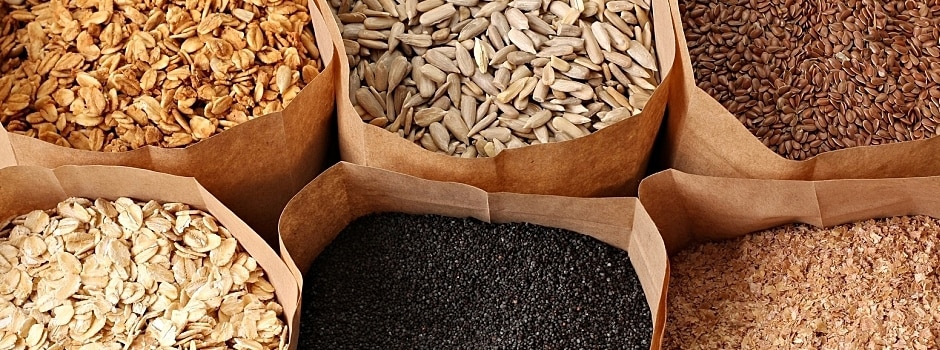It used to be that any sort of carbohydrate, including whole grains, was deemed "unhealthy." However, whole grains are not only nutritionally dense, but many are naturally gluten-free, making them an attractive food for those who have restrictive diets. They're also perfect to experiment with if you're looking to explore new textures and flavors.
Here's what some industry insiders had to say about the resurgence of grains and how they're incorporating them into their menus without sacrificing taste or quality.
The "Rice" of the Western World
Justin Cournoyer, chef and owner of Actinolite restaurant in Toronto, says that in his opinion, whole grains are the rice of the western world. "They are incredibly affordable—about the price of rice. And best of all, they're local," says Cournoyer. His approach is to "get back to real food," or the way food was thought of in the past. For example, he serves grains when they're seasonal. "They're harvested in the late summer and fall, and then they're dried. Going into winter, we use them in a variety of ways," he says. This includes sourcing organic, unbleached, husk-intact milled flour for baking the restaurant's much-lauded red fife and honey loaf, and using the spent grains from a local brewery, along with beer wort (the liquid extracted from the brewing process), to produce burnished breads.
Cournoyer also offers a mixed grain porridge, which consists of rye and wheat berries, spelt, barley, and spelt flakes that are mixed with cream and soured hay butter. On top, a healthy dollop of ground goat meat cooked in whey crowns the grains, and the dish is featured as one of the eight dinner courses on the seasonal tasting menu.
Gluten-Free and Full of Flavor
Maria Speck, the Boston-based award-winning author of Simply Ancient Grains and Ancient Grains for Modern Meals, agrees that the flavor profiles of grains are as varied as they are amazing. "You get everything from hazelnut, cocoa, and honey notes, depending on the grain," she says.
Most grains are also naturally gluten-free. Speck points to the fact that amaranth, millet, buckwheat, various rice varieties (including red and black rice), sorghum, and ancient wheats are all being used by chefs, bakers, and pastry makers. Einkorn, emmer (or farro), and spelt are also making waves, in everything from milled to sprouted flours, which are then used in pastries, pasta, biscuits, beers, spirits, cakes, and bread.
Speck advocates for smaller meat portions that are paired with a delicious side of grains. "Not only is this more cost-effective for restaurateurs, but it also creates a more balanced plate that's better for the planet and our own health."
Perfect for Quick-Service Restaurants
Freshii, a Canadian quick-service restaurant that is located in more than 10 countries worldwide, favors a combination of what they call "fiber-rich, slow-burning carbs, essential fats, and lean proteins." The company's in-house nutritionist, Andie Shapira, says Freshii uses quinoa or brown rice as their whole-grain options because the complex carbs keep you fuller longer, are high in fiber, and maintain your blood sugar levels. These can be topped with a number of vegetables and proteins, or incorporated into burritos, wraps, and soups.
"Lots of guests really enjoy this option. We don't add anything to our whole grains. Instead, we let guests top them with vegetables, proteins, and sauces of their choice, whether it's Asian- or Mexican-inspired," Shapira explains. The company is looking to incorporate other grains into their menus, while also staying on top of trends to meet consumer demand. "Right now, we're looking into a whole-grain blend, and we're looking at testing new items for breakfast," she says.
At the end of the day, all three industry experts agree that people want to eat better. Luckily, there's a world of flavor in whole grains that not only tastes great, but is good for you from the inside out—and chefs and restaurateurs can take advantage of that.

